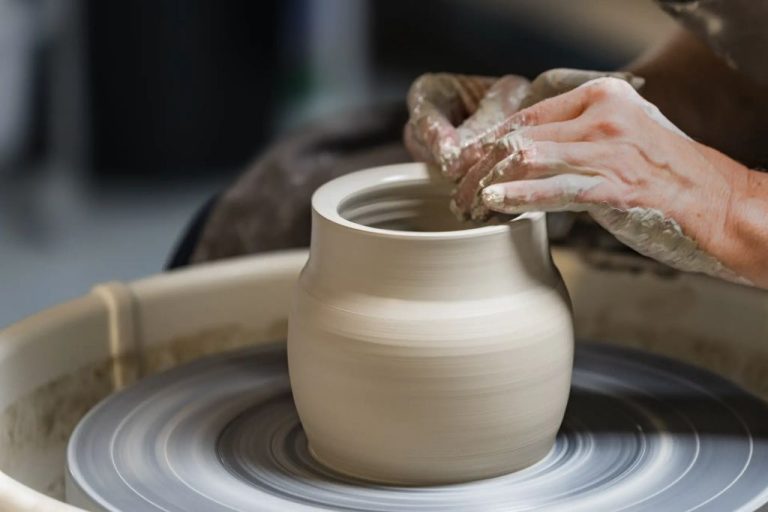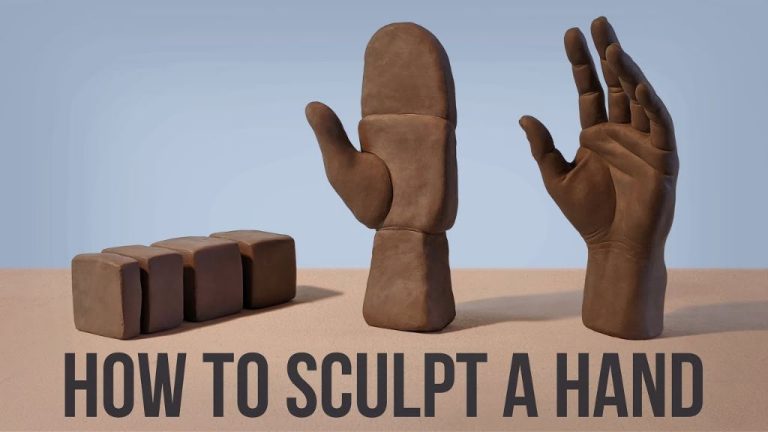What Clay Is Safe For Smoking Pipes?
Introduction
Clay pipes have been used for centuries to smoke tobacco and other natural materials. While early pipes were handmade from natural clays, today there are many types of clay available to pipe makers. Selecting the right clay is critical for safety, as some clays release toxic chemicals when heated or can break down prematurely.
In this guide, we’ll cover the basics of clay pipe making, the safety concerns around clays, recommended safe clays to use, clays to avoid, proper curing and firing, testing and inspecting, use and care, as well as signs of unsafe clays.
Pipe Clay Basics
Clay is a fine-grained natural material composed primarily of hardened minerals like silica, alumina, and iron oxide that gives clay its unique properties. The clay used for smoking pipes needs to withstand high temperatures during firing without cracking or warping. Pipe clays are often blended from various natural clays to achieve the right balance of plasticity for shaping, strength after firing, and low shrinkage.
The most common clays used for pipe making include:
- Earthenware clays – Lower firing clays like red and brown earthenware clays. These are more porous.
- Stoneware clays – Denser clays that vitrify at higher temperatures. These include kaolin and fire clays.
- Ball clays – Added to stoneware clays to improve plasticity during shaping.
Proper clay preparation typically involves wedging or kneading to remove air pockets, then forming the shaped pipe blank. High-fire clays are fired around 2200°F to 2400°F to fully vitrify and harden the clay. Specific clay formulations are often proprietary blends optimized by the pipe makers.
Clay Safety Concerns
When choosing a clay for smoking pipes, it’s crucial to consider any potential health and safety issues. The main concerns with unsafe clays are:
Lead and Other Toxins
Some clays, especially lower-quality ones, may contain dangerous levels of lead and other heavy metals that can leach out during smoking. Lead is highly toxic and can cause severe health problems even in small doses. Other metals like arsenic and cadmium may also be present in contaminated clays.
Heat Resistance
The clay must be able to withstand the high temperatures of smoking without cracking or breaking down. Clays with lower heat resistance can potentially release toxic chemicals when exposed to heat. The clay composition must remain stable when fired at high temperatures.
Porosity Issues
Too much porosity in the clay can lead to the pipe soaking up moisture, which can impact flavor and promote bacterial growth. However, too little porosity can prevent the clay from expanding and contracting safely during temperature changes. The clay porosity must strike the right balance for safety.
Recommended Safe Clays
When selecting clay for pipe making, pure clay types like kaolin are the safest options. Kaolin, also known as China Clay, is a lightly colored clay that fires to a white or near-white color. It has very few impurities, making it an ideal choice. Other safe pure clay options include ball clays, fireclays, and stoneware clays like bentonite.
The purity of these clays reduces risks when exposed to heat and smoke. Sourcing kaolin or other high purity clays from reputable ceramic suppliers is recommended. Ask about material safety data sheets and certificates of analysis to verify contents. Some art ceramics suppliers may even test their clays for trace metals.
It’s also advisable to run your own tests for contaminants. Simple at-home toxicity tests can check for the presence of heavy metals like lead, cadmium or arsenic. Start with small test pieces before using a new clay for pipe making. Check for unusual odors or taste when fired. This helps ensure the clay is free of impurities before crafting a smoked pipe.
Clays to Avoid
When selecting clay for pipe making, it’s important to avoid certain types of clays that may contain toxic minerals or contaminants. Lower grade clays with mineral additives like grog or sand should be avoided, as these additives may contain heavy metals or other toxins that can leach out during smoking. Specific types of clay known to be potentially toxic include red clay or iron-rich clay, which can contain high levels of metals like iron, magnesium, and aluminum.
Cheap imported clays are another area of concern when it comes to safety. Imported clays often lack proper labeling about mineral content and purity levels. The origins and manufacturing process of cheap import clays is usually unknown, making it impossible to verify the safety. For the healthiest experience, it’s best to avoid using clays imported from regions with lower quality standards.
Selecting high purity, food-safe, and lead-free clays from reputable local suppliers is the ideal way to ensure your pipe making clay is free of contaminants. Do your research to understand the mineral content and purity levels of any clay before using it for pipes intended for smoking. Stay away from clays with unknown or questionable origins, adulterations, or possible toxicity issues.
Proper Curing and Firing
Properly curing and firing clay is crucial for ensuring the safety and longevity of your pipe. Always closely follow the manufacturer’s guidelines for curing and firing their clay. Pay attention to recommended curing times, firing temperatures, and ramp speeds.
Firing temperature is especially important. Fire too low and the pipe may not fully vitrify, leaving it porous and prone to harboring bacteria. Fire too hot and you risk cracking or exploding your creation. Target the recommended temperature range and optimize your kiln for even heating.
Invest in a good kiln thermometer and pyrometer to monitor temperatures. Program slower ramp speeds for a gradual increase and decrease in temperature. Allow sufficient soak times at maximum temperature to fully vitrify the clay throughout.
Patience and precision with curing and firing will help ensure your clay pipe is non-porous, durable, and safe for smoking when complete.
Testing and Inspecting
Before using any clay pipe for smoking, it is crucial to thoroughly test and inspect it. This helps ensure the pipe is safe to smoke from and identify any potential hazards.
Perform a careful visual inspection of the entire pipe, inside and out, to check for any cracks, chips, or flaws in the clay. Even small imperfections can allow dangerous chemicals to leach into the smoke. Discard any pipe with cracks or damage.
It is also advisable to test the pipe clay at home for the presence of lead. Lead testing kits are inexpensive and widely available from hardware stores. Follow the directions to prepare a small sample of clay and test it. If lead is detected, do not use the pipe. Look for lead-free clays instead.
Additionally, pay attention during the first few uses of a new clay pipe. Stop using immediately if you notice any odd tastes, smells, or sensations that could indicate problematic compounds leaching from the clay.
Making safety a priority by thoroughly testing and inspecting clay pipes will help identify any risks and ensure a pleasant, hazard-free smoking experience.
Using and Caring
Properly breaking in a new clay pipe is important to prevent cracking and ensure a long life. When first using a new pipe, start with smaller bowls and shorter smoking sessions to slowly build up a protective layer of carbon inside the bowl. This carbon layer helps prevent the clay from overheating. Gradually increase to fuller bowls over the first dozen or so smokes.
For cleaning, use a soft pipe cleaner dipped in isopropyl alcohol to swab out the interior after each use. Allow the pipe to fully dry afterward. Avoid harsh scraping or scouring the bowl, as this can damage the protective glaze. Use a soft cloth with a bit of alcohol to gently wipe down the exterior as needed.
Periodically check for cracks or chips, especially around the rim and shank. Small cracks can be filled with a food-safe epoxy resin specially made for pipes. Avoid exposing the pipe to extreme temperature swings or dropping it. Store pipes in a protective case or pouch. With proper care, a quality clay pipe can provide years of enjoyable smoking.
Signs of Unsafe Clays
It’s important to monitor your pipe for signs it could be constructed from an unsafe clay. There are a few key things to look out for:
Cracking or flaking in the pipe likely indicates the clay integrity has been compromised. This can happen from poor curing, overheating, or chemical leaching. Even small cracks can expose the smoker to potentially dangerous substances released from the clay over time.
Unusual or unpleasant tastes or smells coming from a new pipe suggest something is off with the clay composition. Safe clays should be relatively inert and not impart any weird flavors. An earthy taste is normal, but anything chemical, acidic or very strong could signal toxins leaching from the material.
If a smoker experiences headaches, nausea or other concerning side effects after using a pipe, the clay may be hazardous. Listen to your body – any concerning symptoms could indicate unsafe contaminants being released from poor quality clays when heated and smoked.
Conclusion
It’s important to take the time to select a suitable clay body for your smoking pipe. While some clays like earthenware may seem tempting, they can expose you to lead and other toxins when burned. On the other hand, porcelain and stoneware clays stand up well to heat and provide a safer smoking experience.
When sourcing clay, be sure to check the ingredients list and manufacturer’s specifications. Reputable clays will provide this information. Also take care to properly cure and fire the clay according to guidelines to fully vitrify and set the material. With the right clay and firing process, you can create durable, non-toxic smoking pipes to enjoy.
In the end, safety should be the top priority when selecting pipe clay. Taking the time to find a high-quality porcelain or stoneware clay will give you peace of mind knowing that your materials are safe when exposed to smoking temperatures. With some research and care in preparation, you can create pipes that are beautiful as well as harmless to smoke from.





